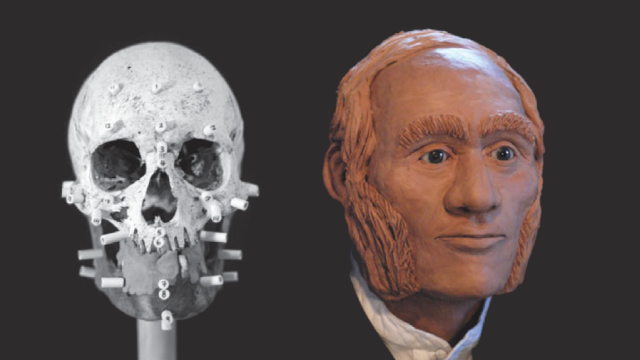A genetic and genealogical analysis has allowed a team of archaeologists to identify the skeletal remains of a sailor who died during the ill-fated Franklin Expedition to map the Northwest Passage in 1845.
Warrant Officer John Gregory, an engineer aboard the HMS Erebus, will go down in archaeological history as the first member of the Franklin Expedition to have his skeletal remains positively identified by DNA analysis. An all-Canadian team from the University of Waterloo, Lakehead University, and Trent University matched the sailor to his great-great-great grandson, who currently lives in South Africa.
The research, which now appears in the science journal Polar Record, is adding some new colour to the bedeviled voyage.
“The 1845 Franklin northwest passage expedition is of interest to people for a variety of reasons, and broadly speaking, because we know so little about the details and the events underlying the decisions that were made and that ultimately resulted in the deaths of all 129 members of the expedition,” Douglas Stenton, an archaeologist from the University of Waterloo and the first author of the study, wrote in an email.
The HMS Terror and HMS Erebus set off from England under the command of Sir John Franklin to map the fabled Northwest Passage. The British Royal Naval expedition ended in disaster, with both ships getting hopelessly stuck in the high Arctic. None of the officers and crew survived the ordeal.
Both ships managed to reach the far north, making it as far west as King William Island, north of what is now Nunavut, Canada. Stuck in the ice and unable to move, 105 crew members retreated to the frozen surface in a desperate attempt to find help. No one survived, resulting in the “greatest loss of life event in the history of polar exploration,” as the archaeologists wrote in their study.
The sunken remains of the Erebus and Terror were discovered by Canadian archaeologists in 2014 and 2016, respectively. The wrecks yielded no bodies, but the remains of the sailors have been found elsewhere. That said, while the names of the officers and crew are well known, the “identification of their skeletons found scattered along the route of their attempted escape is problematic,” according to the study.
Gregory’s remains, along with those of two other sailors, were found on King William Island near Erebus Bay. Tooth and bone samples yielded DNA, while genealogical records led the team to a presumed paternal descendant, who generously offered his DNA for the analysis. It proved to be a match, making John Gregory the “first member of the 1845 Franklin expedition” to have his identity “confirmed through DNA and genealogical analyses,” according to the study.
“Having John Gregory’s remains being the first to be identified via genetic analysis is an incredible day for our family, as well as all those interested in the ill-fated Franklin expedition,” said Jonathan Gregory, John Gregory’s great-great-great grandson, in a press release. “The whole Gregory family is extremely grateful to the entire research team for their dedication and hard work, which is so critical in unlocking pieces of history that have been frozen in time for so long.”
Indeed, the DNA match is the first piece of evidence having to do with Gregory since July 9, 1845, when he sent a letter to his wife, Hannah, when the ships were at port in Greenland.
The identities of the two other sailors whose remains were found at the same site as Gregory’s remain unknown. Same goes for other samples of DNA taken from the remains of crew members found at nine sites along the retreat route.
“We plan to continue with our efforts to identify members of the Franklin crews,” explained Stenton in his email. “The main challenges are to acquire new DNA data from archaeological sites and identifying direct descendants from whom we might obtain DNA samples for comparison.”
It’s taking time, but the last few days and months of this expedition are starting to come into focus. In addition to this latest research, scientists have learned about the various diseases that afflicted the crew and the state of the ships when they were abandoned.
